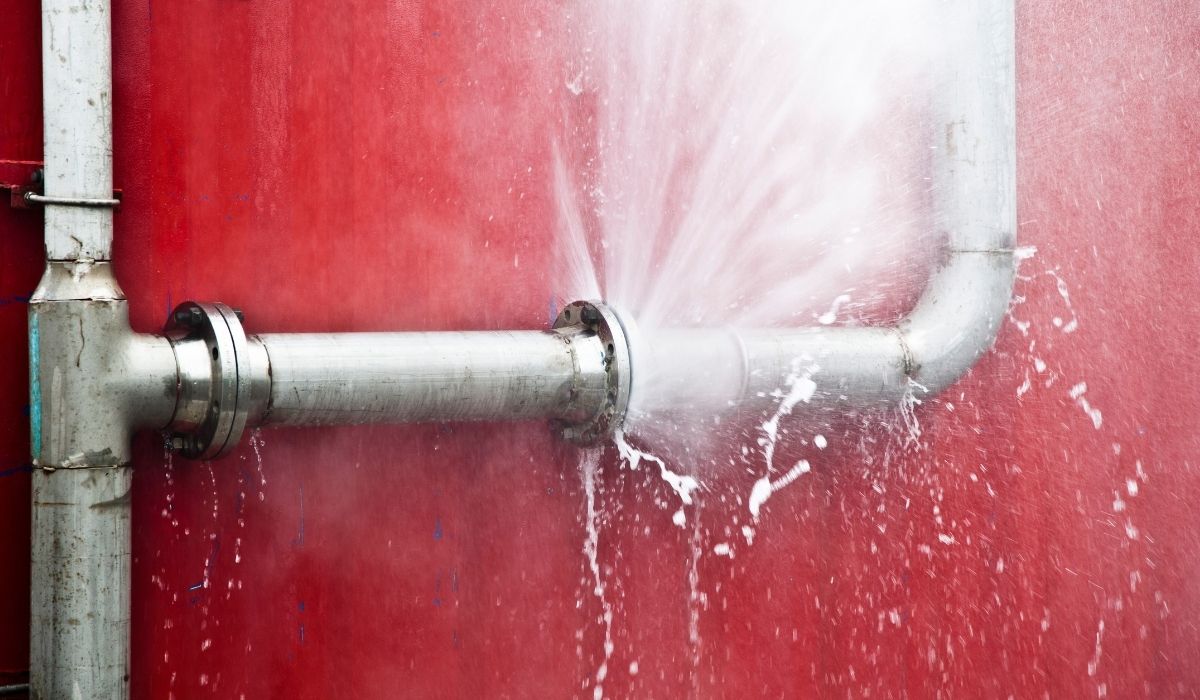Essential Steps in Water Damage Repair in Orange County

Orange County 24 Hour Emergency Water & Fire Restoration Services
In Orange County, unexpected water or fire disasters can render homes uninhabitable and cause extensive damage to personal belongings and structural elements. When disasters strike, rapid restoration is essential to minimize additional damage, prevent mold growth, and reduce long-term repair costs. Homeowners and property managers often face chaos—from a burst pipe in the basement or a flooded roof to the stark devastation left behind by wildfire or an accidental kitchen fire. Preferred Restoration Services offers fast, reliable, and comprehensive emergency repair solutions to bring properties back to life with minimal stress and downtime.
Water damage restoration in Orange County is a specialized field that addresses issues such as water extraction, dehumidification, structural drying, and debris removal. Equally, fire restoration services tackle the challenges of smoke damage, soot cleanup, and the overall reclamation of damaged interiors. With the use of advanced equipment, certified technicians, and strategically applied restoration techniques, professionals are able to restore properties to their pre-disaster condition. Their expertise extends from managing water damage caused by heavy rains, burst fixtures, or flooding, to repairing fire damage with detailed content cleaning and structural repairs.
This comprehensive guide explains the entire process involved in both water and fire restoration, from emergency response to final inspections. It details the immediate steps for water damage emergencies, the technological solutions used during restoration, specialized fire remediation measures, and long-term strategies for ensuring property safety. By outlining these critical procedures and expert services, the article aims to empower Orange County homeowners to navigate emergencies effectively while ensuring the safety and longevity of their properties.
Transitioning to the core details, the following sections provide a step-by-step breakdown of restoration services, field-tested techniques, and the meticulous process employed by restoration technicians across Orange County.
Rapid Emergency Water Damage Repair Available Across Orange County

Water damage emergencies require a quick, coordinated response to mitigate further destruction. When unexpected water intrusion occurs—from flooding due to heavy rains or unexpected pipe bursts—the first step is to remove the water and stop any ongoing leaks. Immediate water extraction, advanced drying techniques, and the deployment of dehumidifiers are essential early actions to minimize the potential for mold growth, structural weakening, and further contamination. Restoration experts arrive on-site with specialized equipment such as high-capacity pumps, industrial-grade dehumidifiers, and moisture detection devices. Their initial assessment centers around understanding the extent of water damage, which is crucial in determining the restoration process.
Immediate Steps to Take During a Water Damage Emergency
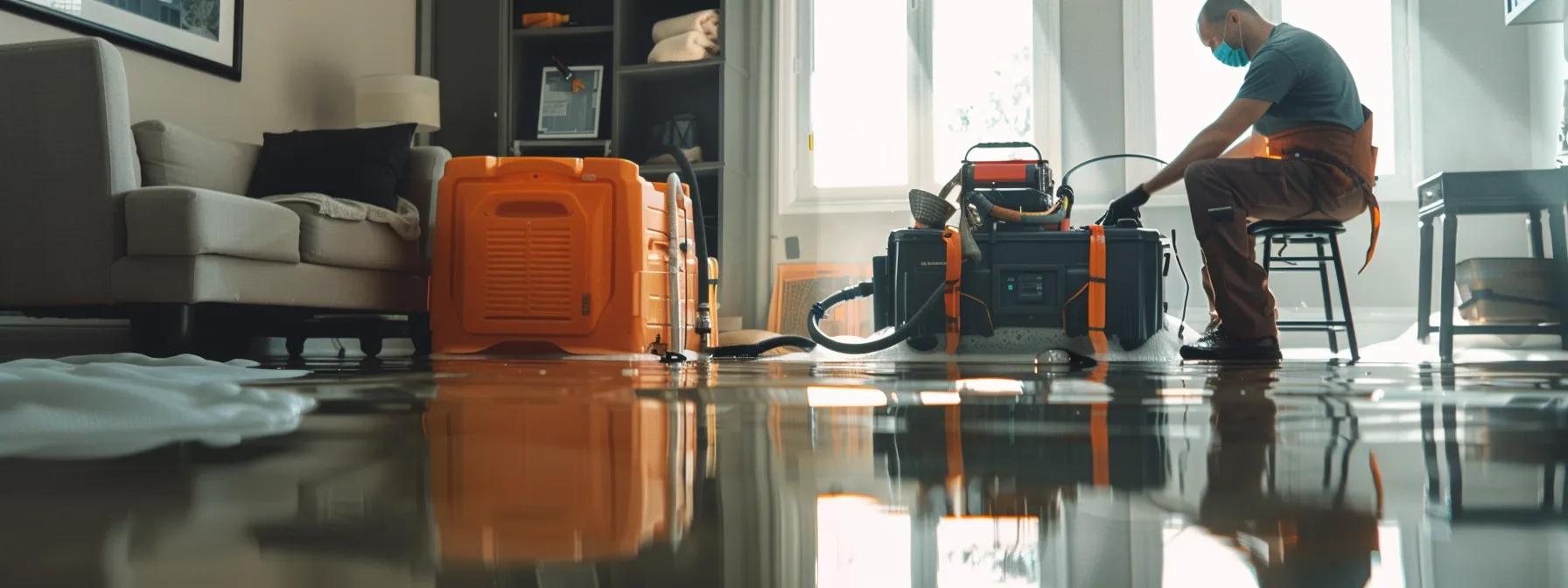
The initial action immediately following a water damage incident should be to ensure the safety of all occupants by turning off the main water supply and electrical power if necessary. Technicians advise to avoid using electrical appliances that could pose shock hazards. Furthermore, homeowners are urged to document the damage with photos or videos for insurance purposes. Secure any valuable items that are at risk from water exposure. Quick intervention not only prevents additional structural harm but also reduces the risk of mold contamination and bacterial growth—a hazard that can threaten both health and property. This immediate response minimizes long-term repair costs and supports a smoother restoration process.
Our 24/7 Emergency Response Protocol for Orange County Residents
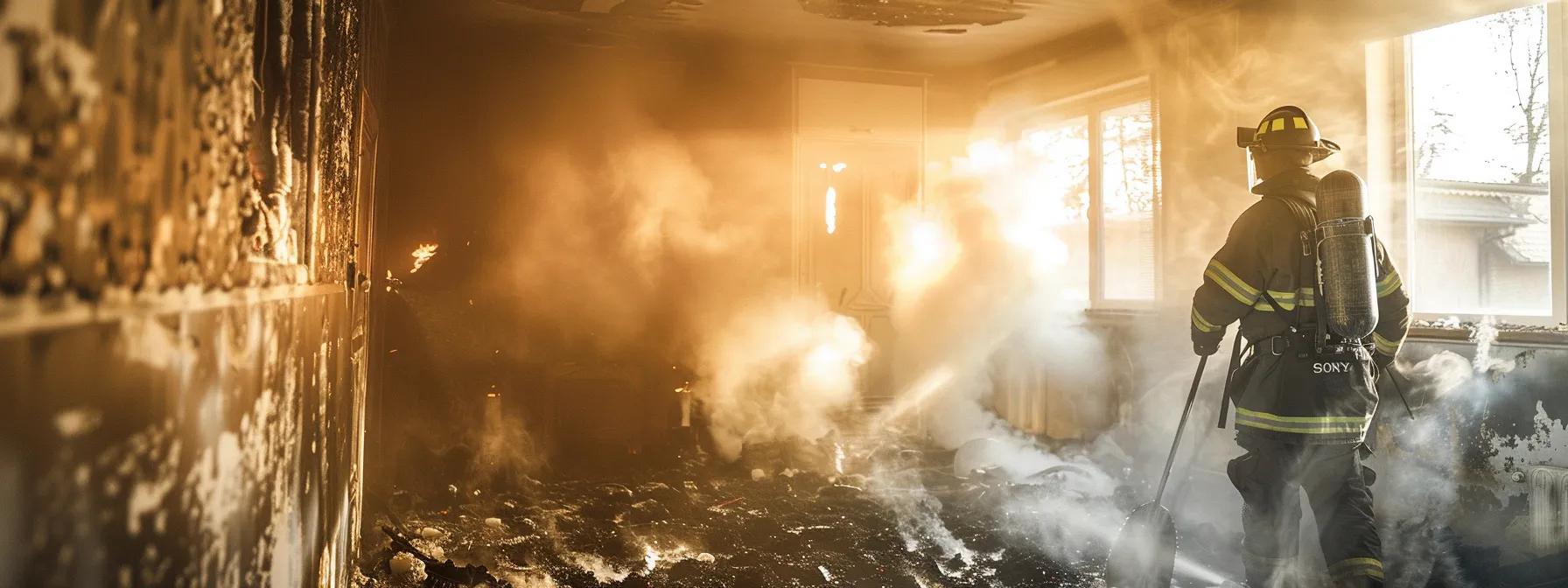
Restoration services in Orange County operate around the clock. Upon receiving an emergency call, a rapid response team is dispatched to the site within minutes, ensuring that water extraction begins as soon as possible. The team follows a strict protocol that includes securing the scene, initiating water extraction, and setting up drying equipment. These professionals work meticulously to identify all affected areas, including hidden moisture behind walls or under flooring. They coordinate with local authorities if needed and provide clear directions to insured clients on how to document damage for swift insurance claims. This 24/7 responsiveness is a critical component in achieving rapid, effective repair outcomes.
Assessing Water Damage Severity Upon Arrival
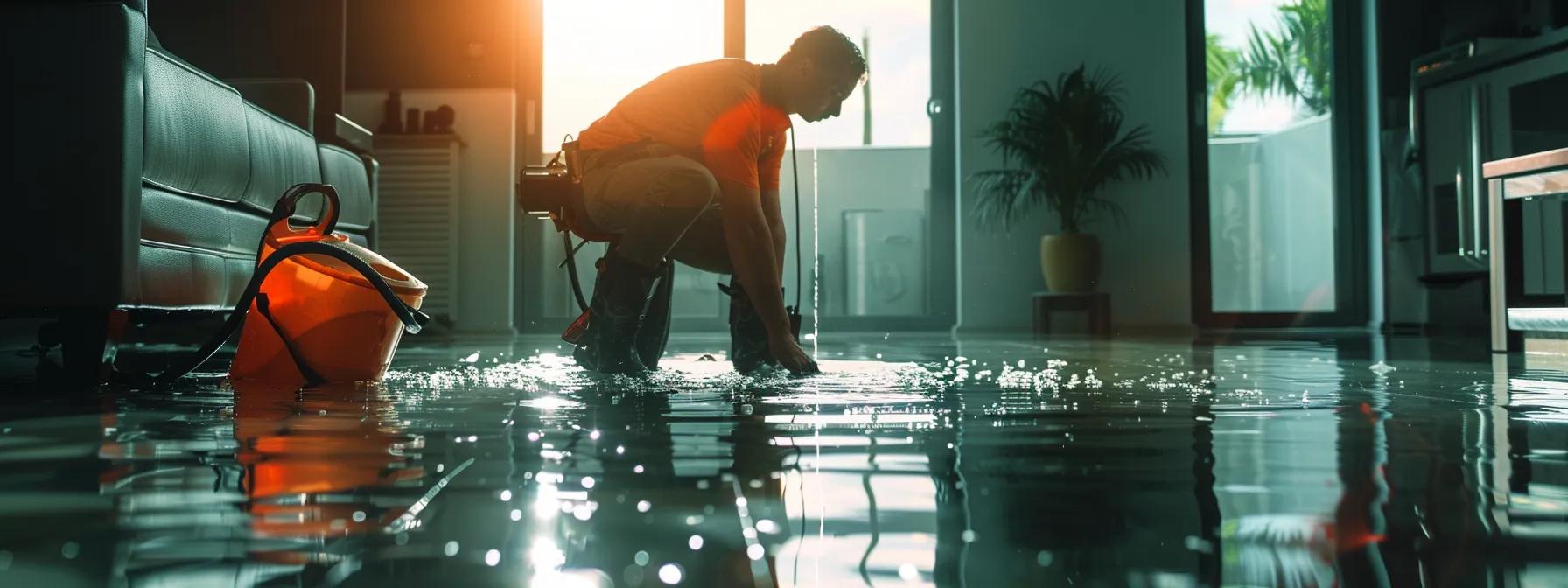
Once on-site, certified technicians perform a comprehensive assessment of the damaged area. They use moisture meters and thermal imaging cameras to detect seepage and hidden saturation. This evaluation helps determine the classification of water damage—from clean water incidents to contaminated gray or black water situations. A detailed report is compiled, noting the spread of water damage, affected materials such as drywall, hardwood floors, and carpets, along with potential structural compromises. This assessment forms the foundation for the subsequent restoration strategy and is critical for insurance purposes as well as planning the comprehensive repairs needed.
Swift Water Extraction and Moisture Removal Techniques

Effective water extraction is performed using industrial-grade pumps and extraction units that remove water from both visible surfaces and hidden cavities. This process is followed by the strategic placement of air movers and dehumidifiers to accelerate the drying process. Advanced drying techniques, including the use of desiccant dehumidifiers, help remove entrapped moisture from walls, floors, and ceilings. These techniques not only restore the property’s integrity but also prevent secondary damage such as warping wood or the onset of mold. The combination of swift extraction and high-powered drying significantly reduces the overall restoration timeline, ensuring that structures can be safely reoccupied sooner.
Preventing Secondary Damage After an Emergency
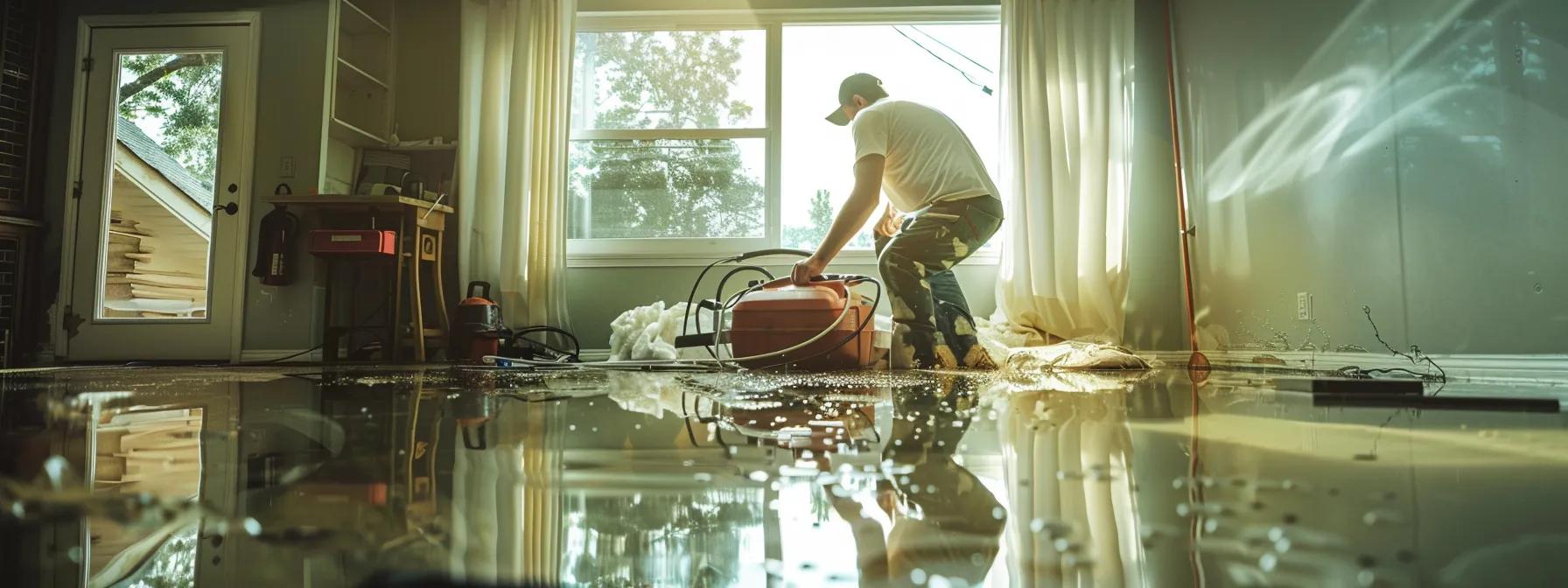
Prevention of secondary damage is a top priority once water extraction is complete. This involves sealing off affected areas to prevent cross-contamination, using antimicrobial and disinfectant treatments to safeguard against bacteria and mold, and ensuring continual monitoring until complete dryness is achieved. Structural repairs and restoration are planned meticulously after the area is declared dry. The use of moisture indicators and sensors throughout the restoration process ensures that no hidden water pockets remain. Preventive steps take into account potential future hazards such as debris or reoccurring leaks and are designed to provide long-term protection against future water damage events.
Key Takeaways: – Rapid response and immediate extraction are critical to preventing further water-related damage. – Certified technicians use specialized tools for water extraction and moisture detection. – Preventive treatment and continuous monitoring ensure long-term restoration integrity.
Your Comprehensive Guide to Water Damage Restoration in Orange County

Water damage restoration in Orange County is an intricate process that involves multiple phases, starting from the immediate emergency response to the final stages of reconstruction. Common causes of water damage include burst pipes, roof leaks, appliance malfunctions such as washing machine failures, and natural disasters such as rainstorms or floods. Each of these causes may result in different types of damage ranging from surface-level moisture to deep-seated structural harm. Homeowners must act swiftly to mitigate the issues before they evolve into more serious problems like mold infestation or wood rot.
Identifying Common Causes of Water Damage in Orange County Homes
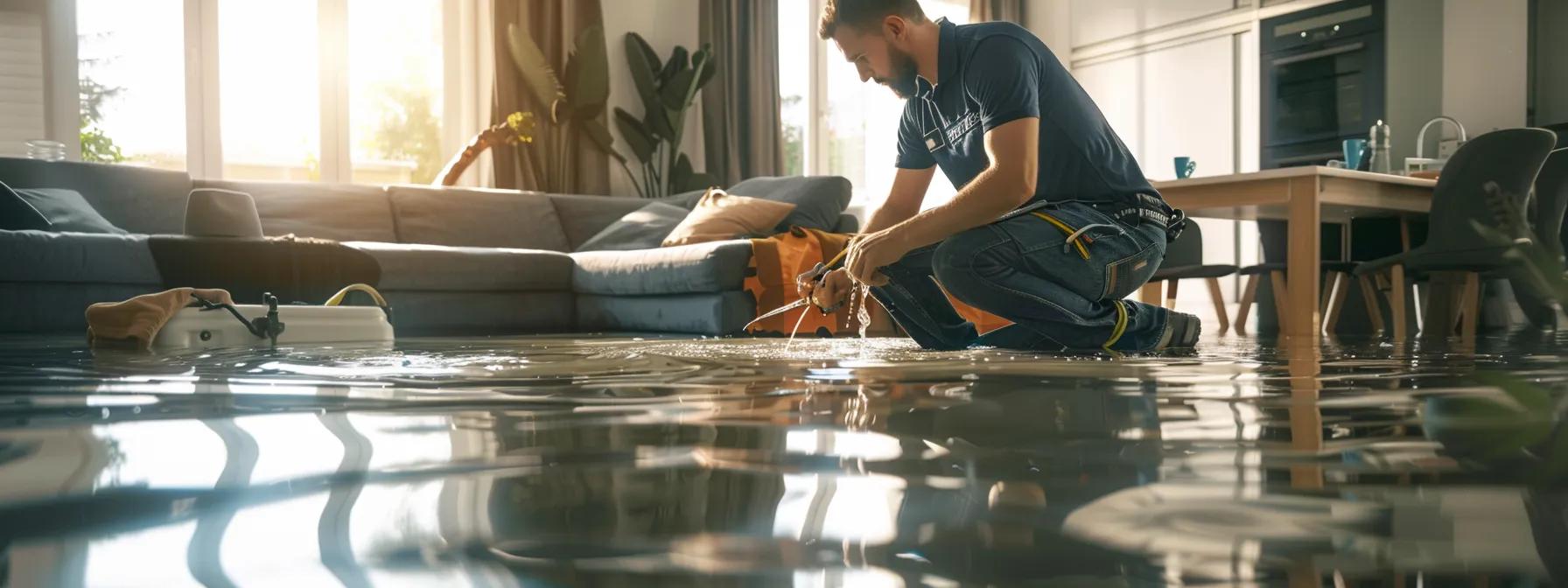
Orange County experiences distinct weather patterns, making homes vulnerable to diverse water damage sources. Heavy rains and floods often lead to roof leaks and basement flooding, while aging pipes and malfunctioning appliances can contribute to sudden bursts of water indoors. In coastal areas, beach proximity can also lead to saltwater intrusion and additional corrosion of building materials. Contaminants from sewage backups or storm debris further complicate water damage scenarios. Recognizing these common causes enables homeowners to adopt preventative measures such as regular inspections and timely maintenance. Early identification of potential risks is vital to reducing restoration costs and ensuring quicker recovery from disastrous water events.
The Full Spectrum of Water Damage Restoration Orange County Services
Restoration services in Orange County cover a wide array of water damage issues. Services include water extraction, drying and dehumidification, contamination cleanup, mold remediation, and structural repairs. Technicians use state-of-the-art equipment to detect hidden moisture, which is essential in preventing long-term degradation. They work on restoring not only the structural integrity of the home but also salvaging personal belongings affected by water damage. Specialized treatments address issues like mildew formation, bacterial contamination, and wood rot. The comprehensive approach ensures that all aspects—from emergency response to long-term structural repairs—are handled with precision and care.
Specialized Flood Cleanup Services Orange County Procedures
Flood cleanup services are tailored to address the unique challenges posed by large-scale water intrusions. These procedures involve removal of contaminated water, assessment of debris and moisture levels, and detailed cleaning of affected areas to remove harmful pollutants and prevent structural decay. Flood cleanup may also require the use of specialized sanitation protocols to neutralize pathogens that thrive in stagnant water. By integrating advanced drying techniques and reconstruction protocols, restoration companies ensure that the property is safely restored to its original condition. The restoration plan is documented meticulously to support insurance claims and offer reassurance to homeowners during a crisis.
Drying and Dehumidification for Complete Restoration
Drying and dehumidification are cornerstones of effective water damage restoration. Technicians deploy a series of high-powered air movers, industrial dehumidifiers, and drying mats to remove both visible and hidden moisture. This phase is critical because even a small amount of moisture left behind can lead to significant secondary damage, including mold growth and structural instability. Continuous monitoring using moisture meters ensures that drying is thorough, with adjustments made as necessary. Prolonged drying cycles may be required for materials like hardwood flooring and drywall. These efforts help prevent future complications such as mildew or wood degradation and ensure that the home is safe for occupancy.
Mold Remediation Following Water Damage Incidents
Once the extraction and drying processes are complete, mold remediation becomes essential. This involves the removal of mold-infested materials, treatment of surfaces with antifungal agents, and, in some cases, complete replacement of affected components. Special attention is paid to hidden areas where mold can proliferate in damp, enclosed environments. Certified mold remediation experts use advanced detection techniques and air filtration systems to ensure that the indoor air quality is restored. This phase is crucial as mold can cause significant health risks, particularly for individuals with respiratory issues or weakened immune systems. Effective mold remediation techniques ultimately secure long-term safety and durability of the property.
Key Takeaways: – Water damage in Orange County stems from natural disasters, appliance failures, and aging infrastructure. – A full-service restoration approach covers extraction, dehumidification, and mold remediation. – Specialized flood cleanup and exhaustive drying processes prevent secondary damage and promote safety.
Expert Fire Restoration Services for Orange County Properties
Fire damage restoration requires a separate and specialized set of procedures that address both the physical destruction and the residual effects of smoke and soot. In Orange County, fire incidents—whether caused by electrical faults, kitchen mishaps, or wildfires—can result in extensive and devastating damage. The expertise of fire restoration technicians is critical in not only cleaning up the mess but also restoring the integrity and safety of the structure. Effective fire restoration involves meticulous cleaning, deodorization, and structural repairs to return homes to a livable state, all while working directly with affected homeowners and their insurance providers.
Addressing Smoke and Soot Damage Effectively
Immediate action is needed to address smoke and soot damage following a fire. Soot particles are microscopic, can deeply penetrate surfaces, and are notorious for causing persistent odors that compromise indoor air quality. Restoration professionals employ specialized cleaning agents and equipment to remove soot from all surfaces, including walls, floors, and furniture. Advanced air filtration systems and ozone treatments are often used to neutralize lingering odors. These techniques are supplemented by thermal imaging to ensure that all traces of soot are removed, preventing any recurrence of odor or potential harm from smoke residue.
Structural Cleaning and Deodorization After a Fire
Following the removal of soot and smoke, structural cleaning becomes pivotal. This involves the careful cleaning of walls, ceilings, and structural beams using appropriate solvents and industrial-grade cleaning equipment. Deodorization methods, such as fogging and ozone treatments, are implemented systematically to eliminate the persistent smell of smoke. These procedures not only restore the aesthetic appeal of the property but also contribute to improved air quality, which is essential for health and safety. The process is highly technical, as it must safeguard both the architectural integrity of the building and the personal belongings of the occupants.
Content Cleaning and Restoration for Fire Damaged Belongings
The effects of fire do not stop at the structure; personal belongings can also be severely affected by smoke, heat, and water used during firefighting efforts. Restoration experts work meticulously to clean, repair, and restore items such as furniture, electronics, and family heirlooms. Specialized cleaning agents and restoration techniques are applied to salvage items that may otherwise be considered unsalvageable. This careful process of content restoration not only preserves valuable possessions but also offers emotional relief to homeowners who have faced the traumatic event of a fire incident.
Repairing Fire Damage to Ensure Property Safety
The final stage in fire restoration is repairing structural damage to ensure the safety and longevity of the property. This involves the assessment and replacement of damaged building materials, from drywall and insulation to flooring and roof elements. Skilled contractors work to rebuild and reinforce the structure, ensuring it meets current safety codes and standards. Coordination with insurance companies and local authorities is maintained throughout this process to guarantee compliance with all regulatory requirements. The goal is to fully restore the property while enhancing its resilience against future fire events.
Working With Your Insurance for Fire Damage Claims
Navigating insurance claims after a fire can be complex. Restoration experts in Orange County assist homeowners in documenting the damage and compiling detailed reports that support claim submissions. They work closely with insurance adjusters to ensure that all aspects of the restoration—cleaning, repairs, deodorization—are accounted for and reimbursed accordingly. This professional guidance helps expedite claims processing and relieves homeowners of the burdens associated with funeral paperwork, ensuring a smooth transition from damage to recovery.
Key Takeaways: – Effective fire restoration addresses smoke, soot, and structural damage simultaneously. – Specialized cleaning, deodorization, and content restoration are critical to full recovery. – Collaboration with insurance providers streamlines the claims process and supports financial recovery.
Understanding Our Orange County Water and Fire Restoration Process
The restoration process in Orange County is designed to provide clients with a transparent, systematic, and effective approach to repairing water and fire damage. This multi-step methodology ensures that every aspect of the restoration—from the initial assessment to the final review—is managed with expert care and precision. Homeowners are able to trust that certified technicians follow a structured process, which minimizes risks, improves repair quality, and ensures compliance with industry standards. Detailed documentation provided during every phase also assists with insurance claims and future preventive strategies.
Initial Consultation and Damage Assessment in Orange County
The process begins with an initial consultation, where restoration experts visit the property to evaluate the extent of water or fire damage. Using state-of-the-art diagnostic tools such as moisture meters and thermal imaging cameras, they quickly determine the affected areas and the severity of damage. The technician records visible and hidden damage, noting the conditions of walls, floors, ceilings, and any attached contents. This thorough assessment not only sets the stage for the restoration plan but also ensures that homeowners are fully informed about the scope and potential costs. An accurate evaluation is crucial for a successful restoration and is backed by professional certification standards.
Detailed Restoration Plan and Transparent Quoting
Following the consultation, a detailed restoration plan is developed. This plan outlines the scope of work, materials needed, estimated time for each phase, and associated costs. Homeowners receive a transparent quote which includes itemized costs for equipment, labor, salvage, and disposal of damaged materials. The detailed restoration plan and budgeting processes are designed to eliminate uncertainty, ensuring that clients fully understand the steps ahead. Regular updates are provided throughout the restoration process to maintain clear communication. This contractual agreement sets the expectation for quality and timeliness in the restoration services, allowing homeowners to plan accordingly.
Executing Water or Fire Damage Repair With Precision
With the restoration plan in hand, certified technicians commence the repair and restoration work. This phase involves implementing the extraction, drying, cleaning, repair, and reconstruction procedures with high precision. Advanced equipment is used to monitor moisture levels, and specialized cleaning agents are applied to disinfect and remove contaminants. In fire damage scenarios, soot and smoke residues are carefully eliminated from all surfaces using industry-approved processes. Each step is executed in tandem with continuous quality checks to ensure that every repair meets stringent safety codes. The technicians integrate their local knowledge of Orange County conditions to adapt techniques that are best suited for coastal environments, variable weather, and building characteristics common in the area.
Continuous Monitoring and Quality Checks During Restoration
During the restoration process, continuous monitoring is essential to track progress and detect any issues early. Technicians utilize moisture sensors and air quality monitors to ensure that drying and deodorization processes are effective. Regular inspections are carried out to confirm that structural repairs are durable and that mold and contaminants are not developing in hidden areas. Quality checks are documented, and any necessary adjustments are made immediately. This approach not only boosts customer satisfaction by ensuring high repair standards but also supports compliance with regulatory guidelines, thereby fostering long-term property safety.
Final Walkthrough and Ensuring Client Satisfaction
The restoration process concludes with a final walkthrough, during which the completed work is reviewed in detail with the property owner. Technicians explain every aspect of the work performed, address any remaining issues, and ensure that the property is fully restored to a safe, clean, and habitable state. Client feedback is gathered to further refine the process, and a final report is provided to assist with any insurance follow-up. This commitment to excellence and transparency guarantees that every project meets the highest industry standards and protects the long-term value of the property.
Key Takeaways: – A structured restoration process starts with a comprehensive consultation and damage assessment. – Detailed restoration plans and transparent quotes ensure client understanding and trust. – Continuous monitoring and final walkthroughs guarantee high-quality, compliant repair work.
Choosing Professional Restoration Services in Orange County
For Orange County homeowners facing water or fire damage, choosing professional restoration services is paramount to achieving effective, long-lasting results. Certified restoration technicians combine specialized training with advanced equipment to quickly address any damage, reduce secondary risks, and restore properties to their former condition. By hiring professionals, homeowners gain access to a wealth of local knowledge and industry expertise that ensures each restoration project is finely tuned to the region’s climate, construction styles, and regulatory requirements. Experienced contractors guide clients through the insurance claims process, provide detailed documentation of the repair work, and continuously update them on project milestones to ensure total customer satisfaction.
Benefits of Hiring Certified Restoration Technicians
Certified restoration technicians bring a depth of experience and professional training that is critical when handling water and fire damage. Their certifications ensure that they are adept at using tools like industrial dehumidifiers, thermal imaging cameras, and air filtration systems. Additionally, these experts have extensive knowledge of safety protocols, including the use of personal protective equipment and proper ventilation practices during cleanup. Their certification also means adherence to industry standards set by organizations such as the Institute of Inspection, Cleaning, and Restoration Certification (IICRC). Hiring certified professionals guarantees that all restoration work is performed safely, accurately, and in full compliance with local regulations—minimizing the risk of future damage and ensuring a complete return to normalcy.
Advanced Equipment Used for Water and Fire Restoration
Restoration services in Orange County leverage advanced equipment to handle diverse challenges that arise from water or fire damage. High-capacity pumps, industrial-grade dehumidifiers, and thermal imaging cameras are commonly deployed to extract water and identify hidden moisture pockets. For fire restoration, specialized air scrubbers, ozone machines, and high-efficiency particulate air (HEPA) filters help in removing smoke particles and neutralizing odors. The use of advanced equipment not only expedites the restoration process but also enhances the quality of repairs by ensuring thorough removal of contaminants and moisture. This technological edge plays a crucial role in reducing repair times and improving property safety, making it a valuable asset in any restoration endeavor.
Local Orange County Knowledge for Faster, Better Service
Local restoration professionals understand the unique challenges presented by Orange County’s climate and infrastructure. From the coastal humidity that accelerates mold growth to the occasional heavy rainfall that can overwhelm drainage systems, local technicians are well equipped to respond to these challenges. Their familiarity with regional building codes, insurance requirements, and prevailing weather conditions means they can deliver tailored restoration solutions that address the precise needs of each homeowner. Furthermore, their proximity to the disaster site ensures a faster response time, which is crucial in minimizing secondary damage and expediting the overall restoration process.
Navigating Insurance Claims for Water and Fire Damage
Complex insurance claims are an inevitable part of the restoration process. Professional restoration companies provide comprehensive support during claim filings by documenting every phase of the repair process, ensuring that all costs are justified and properly recorded. Detailed reports, photographs, and moisture readings are used to back up claims, making it easier for adjusters to understand the extent of the damage and the scope of the repair work. Homeowners benefit immensely from the expertise of restoration technicians who work directly with insurance companies to simplify the claims process, thereby reducing stress and accelerating financial recovery.
Testimonials From Satisfied Orange County Clients
Numerous Orange County residents have shared their positive experiences with professional restoration services. Testimonials highlight the rapid response times, exceptional communication, and high quality of work delivered by certified technicians. Clients appreciate not only the technical expertise but also the empathetic approach taken by restoration teams, who understand the emotional toll that such disasters can inflict. These testimonials serve as evidence that hiring professional restoration services significantly improves customer satisfaction and ensures a smoother, more efficient restoration process.
Key Takeaways: – Certified restoration technicians ensure safe, compliant, and efficient repairs. – Advanced equipment and local expertise help tailor restoration to regional challenges. – Professional guidance through insurance claims and positive client testimonials foster long-term trust and satisfaction.
Securing Your Property After Water or Fire Damage in Orange County
Securing a property after the immediate water or fire restoration is crucial to prevent future incidents and maintain the integrity of the home. Post-restoration security measures include thorough inspections, implementation of preventative upgrades, and ongoing monitoring. These steps not only ensure the property is safe for residents but also protect homeowners from financial loss due to recurring incidents. With the restoration work complete, attention shifts toward ensuring that the property remains in optimal condition despite external and internal challenges such as weather fluctuations, microbial growth, or structural weaknesses introduced during the disaster.
Essential Post-Restoration Property Inspections
After restoration, a comprehensive property inspection is necessary to confirm that every damaged area has been fully addressed. Certified inspectors evaluate all structural elements such as walls, flooring, roofs, and electrical systems for any signs of lingering damage. Moisture detectors and insulation tests may be employed to verify that the drying process was complete and effective. These detailed inspections are critical not only for current safety but also for future preventative maintenance. Comprehensive inspection reports provide homeowners with peace of mind and support future insurance claims if additional damage is discovered later.
Implementing Measures to Prevent Future Water Damage
Prevention of future water damage involves a proactive approach that combines regular maintenance with strategic upgrades. Homeowners are advised to invest in improved drainage systems, waterproofing treatments, and upgraded sewer lines to minimize potential water intrusion. Installing water leak detectors and smart shut-off valves can also provide early warnings to prevent significant damage. Further measures, such as routine inspections of roofs, gutters, and plumbing, are essential for identifying vulnerabilities before they escalate into serious issues. By integrating these preventative strategies, homeowners can significantly reduce the risk of future water damage, ensuring long-term property integrity.
Fire Safety Recommendations for Orange County Homeowners
For fire safety, homeowners should install and maintain smoke detectors, fire extinguishers, and sprinkler systems. Regular safety audits and drills are recommended to ensure that all fire prevention measures are functional and that inhabitants are familiar with emergency procedures. Upgrading electrical wiring and implementing fire-resistant building materials can further reduce fire risks. Restoration services often provide additional guidance on securing and reinforcing properties to withstand potential fire-related incidents. These recommendations, when combined with routine inspections, create a robust defense against future fires and safeguard both lives and property.
Maintaining Your Property Post-Restoration
Maintenance after restoration is a critical step towards long-term property safety. Homeowners are advised to follow a structured maintenance schedule that includes periodic cleaning of HVAC systems, inspections of roofing and exterior walls, and regular professional evaluations of plumbing systems. Preventative maintenance not only extends the life of the restoration work but also minimizes the potential for subsequent emergencies. Collaborative partnerships with local restoration experts can provide homeowners with tailored maintenance plans that align with Orange County’s unique environmental conditions. This continuing support ensures that properties remain resilient and are better prepared to face unexpected challenges.
Long-Term Support for Orange County Property Owners
Long-term support extends beyond the initial restoration work. Many restoration companies in Orange County offer ongoing monitoring and maintenance services, emergency call-outs, and even seasonal check-ups to ensure that the property remains safe. These services are especially important in areas prone to natural disasters like heavy rains and wildfires. Regular follow-ups, detailed inspections, and timely repairs provide homeowners with a sense of security and reduce long-term damage risks. Partnerships with local restoration services grant property owners access to expert advice and prioritized emergency response, ensuring that any future incidents are managed swiftly and effectively.
Key Takeaways: – Comprehensive post-restoration inspections verify that all damage has been addressed. – Implementing preventative measures, such as leak detectors and drainage upgrades, minimizes future risks. – Ongoing maintenance and long-term support from local experts ensure property safety.
Frequently Asked Questions
Q: How quickly should water damage be addressed to prevent mold growth? A: Water damage should be addressed within 24–48 hours. Rapid extraction and drying are critical to prevent mold growth, which can begin within 24–48 hours after the affected area becomes saturated.
Q: What steps are involved in fire restoration services? A: Fire restoration involves soot and smoke removal, structural cleaning, deodorization, and reconstruction of damaged areas. Technicians also focus on content restoration and collaborate with insurance companies to streamline the claims process.
Q: How do professionals assess the extent of water damage? A: Certified technicians use moisture meters, thermal imaging cameras, and visual inspections to determine the extent of water damage. This assessment helps to identify hidden moisture trapped within walls, floors, and ceilings, guiding the restoration process.
Q: What advanced equipment is used during restoration? A: Restoration professionals use high-capacity pumps, industrial dehumidifiers, air movers, thermal imaging cameras, HEPA air filtration systems, and ozone generators. This equipment ensures thorough extraction, drying, cleaning, and deodorization.
Q: How does working with a certified restoration technician benefit property owners? A: Certified technicians bring specialized training, local expertise, safety compliance, and advanced restoration tools to the process. Their experience ensures that restoration is conducted efficiently, preventing further structural damage and reducing long-term repair costs.
Q: How can homeowners prevent future water damage after restoration? A: Homeowners can install water leak detectors, upgrade drainage and waterproofing systems, perform regular maintenance inspections for plumbing, roofs, and gutters, and schedule periodic evaluations by restoration experts.
Q: What role does insurance play in restoration services? A: Insurance is critical in the restoration process as professionals document all work, provide detailed reports, and assist homeowners in filing claims. This collaborative process helps to ensure that restoration costs are adequately covered and that the homeowner experiences minimal financial stress.
Final Thoughts
Orange County homeowners facing water or fire emergencies can rely on professional restoration services to quickly restore their properties and prevent long-term damage. The comprehensive approach—from immediate response and extraction to final inspections and maintenance—ensures that each property is returned to its pre-disaster condition. By employing certified technicians equipped with advanced equipment and local knowledge, the process is streamlined and effective. Homeowners are encouraged to establish ongoing maintenance plans and preventive strategies to safeguard their most valuable asset against future disasters.



